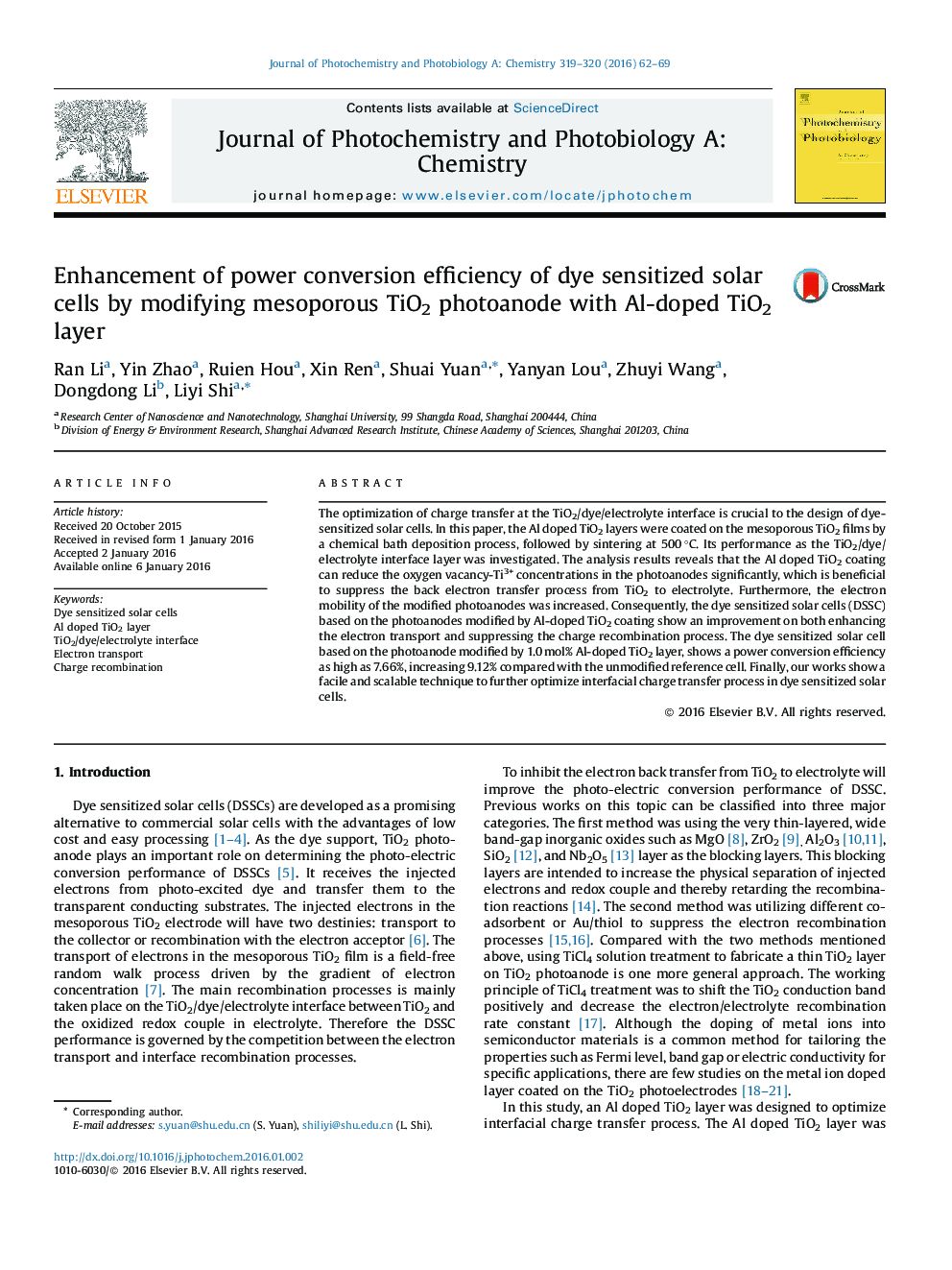| Article ID | Journal | Published Year | Pages | File Type |
|---|---|---|---|---|
| 25834 | Journal of Photochemistry and Photobiology A: Chemistry | 2016 | 8 Pages |
•DSSC photoanode was modified by Al doped TiO2 layers.•The modification enhanced electron transport and suppressed charge recombination.•The electron injection efficiency and collection efficiency were improved.
The optimization of charge transfer at the TiO2/dye/electrolyte interface is crucial to the design of dye-sensitized solar cells. In this paper, the Al doped TiO2 layers were coated on the mesoporous TiO2 films by a chemical bath deposition process, followed by sintering at 500 °C. Its performance as the TiO2/dye/electrolyte interface layer was investigated. The analysis results reveals that the Al doped TiO2 coating can reduce the oxygen vacancy-Ti3+ concentrations in the photoanodes significantly, which is beneficial to suppress the back electron transfer process from TiO2 to electrolyte. Furthermore, the electron mobility of the modified photoanodes was increased. Consequently, the dye sensitized solar cells (DSSC) based on the photoanodes modified by Al-doped TiO2 coating show an improvement on both enhancing the electron transport and suppressing the charge recombination process. The dye sensitized solar cell based on the photoanode modified by 1.0 mol% Al-doped TiO2 layer, shows a power conversion efficiency as high as 7.66%, increasing 9.12% compared with the unmodified reference cell. Finally, our works show a facile and scalable technique to further optimize interfacial charge transfer process in dye sensitized solar cells.
Graphical abstractFigure optionsDownload full-size imageDownload as PowerPoint slide
